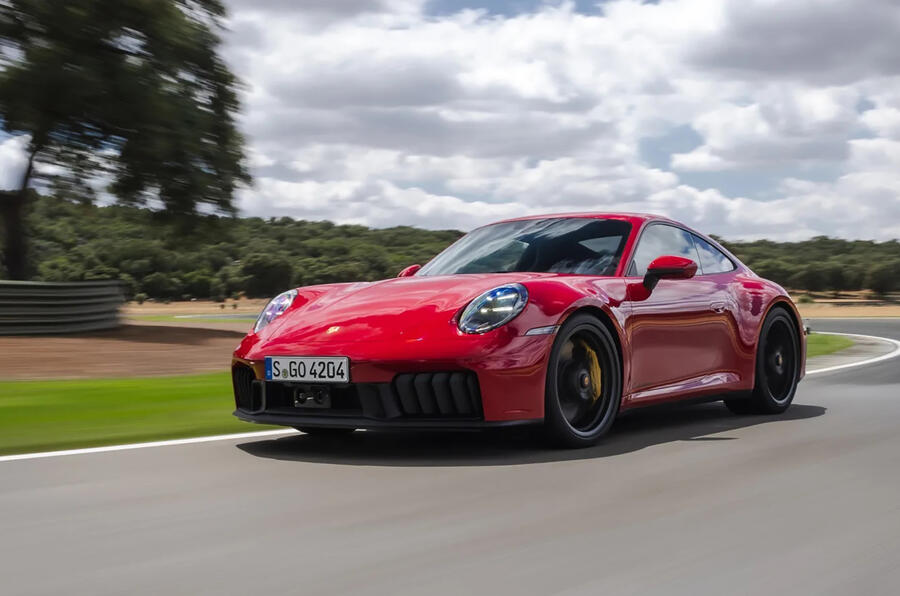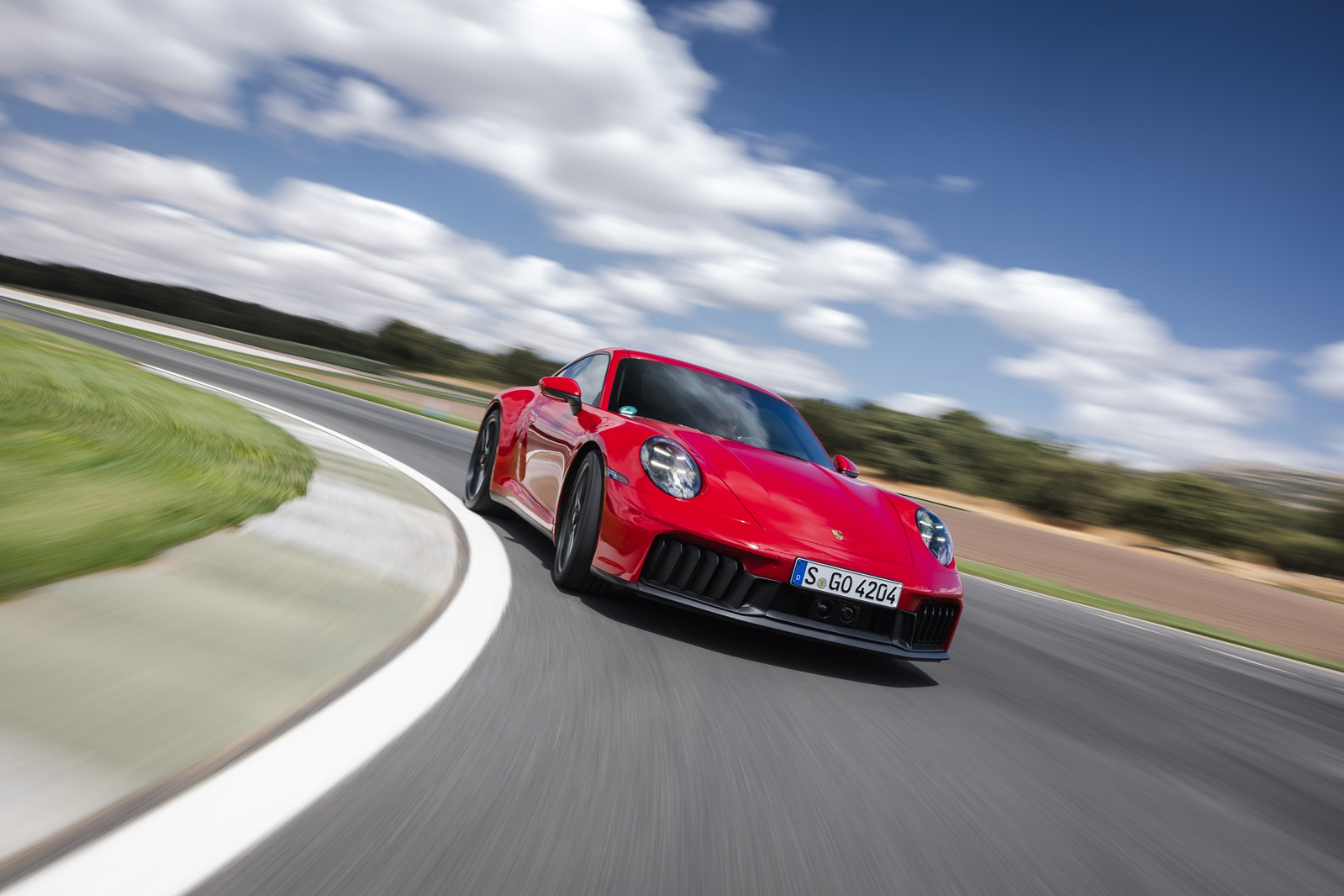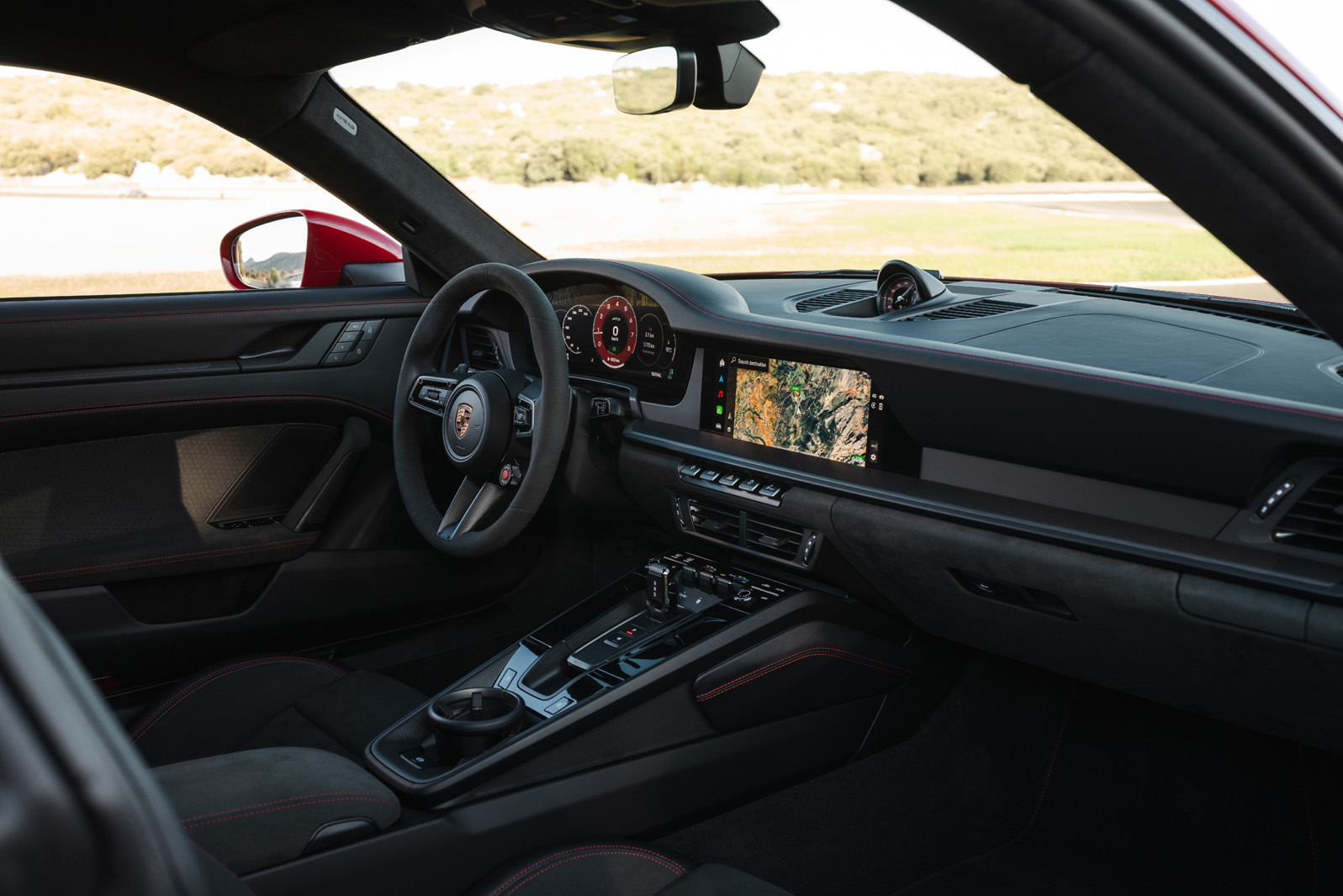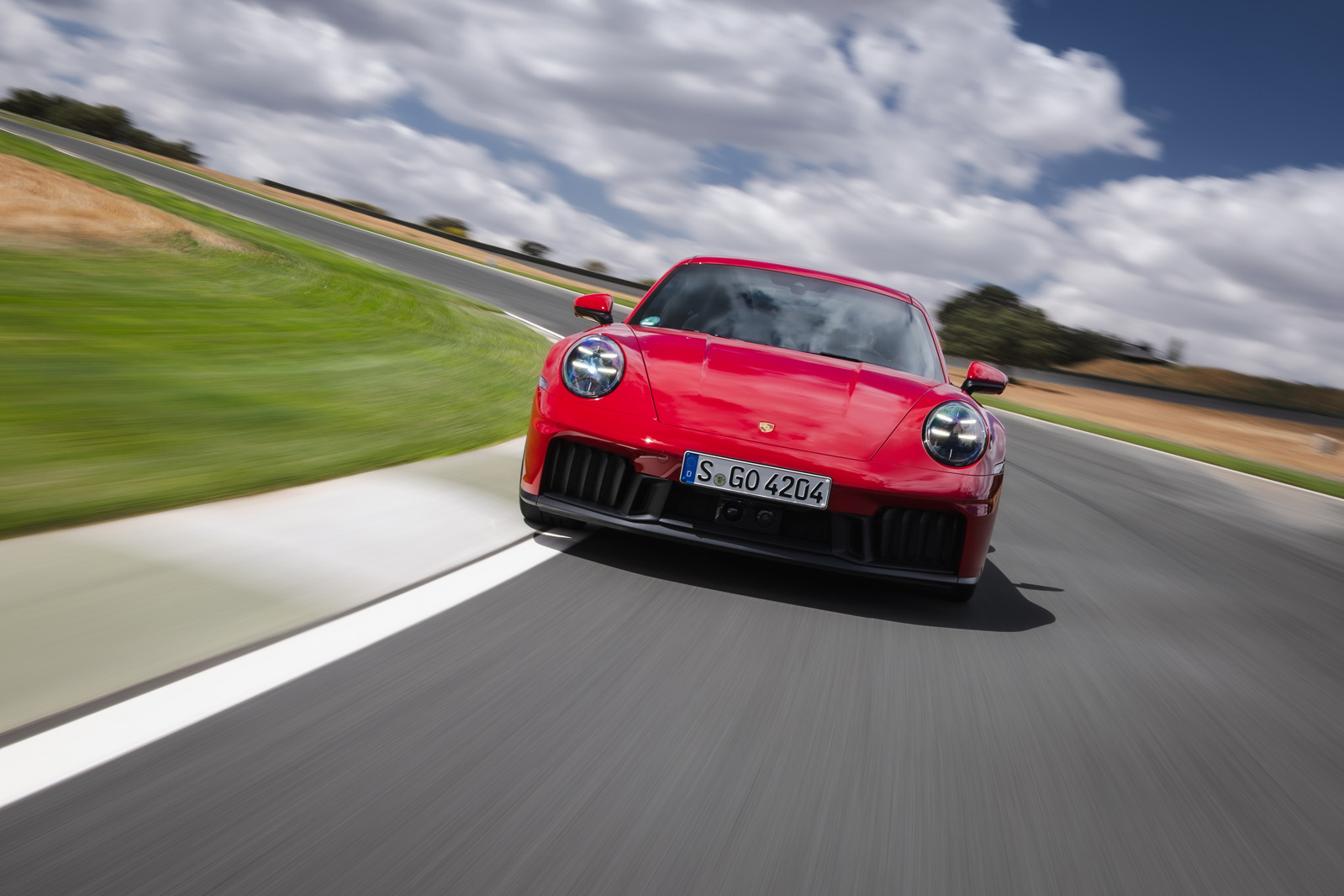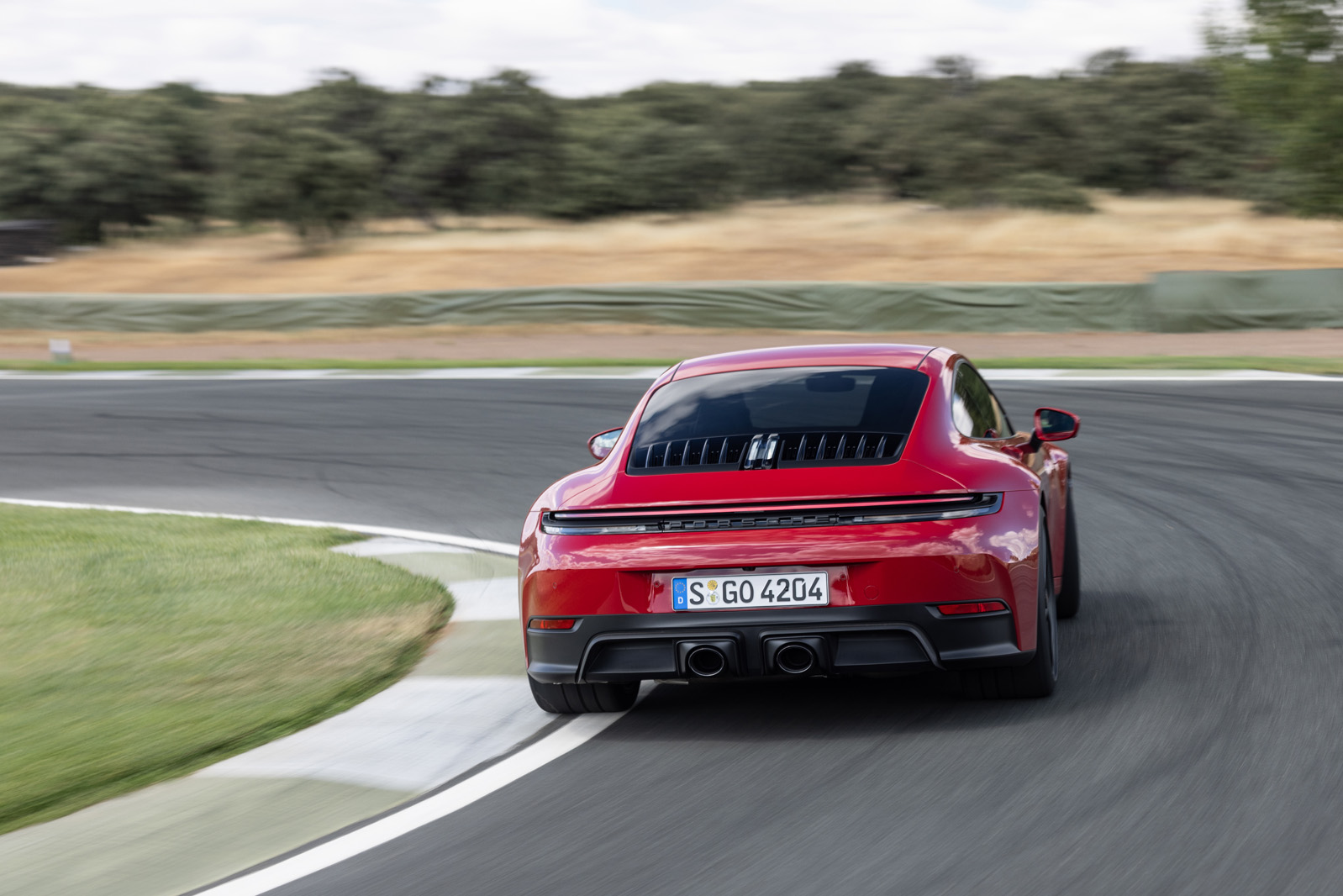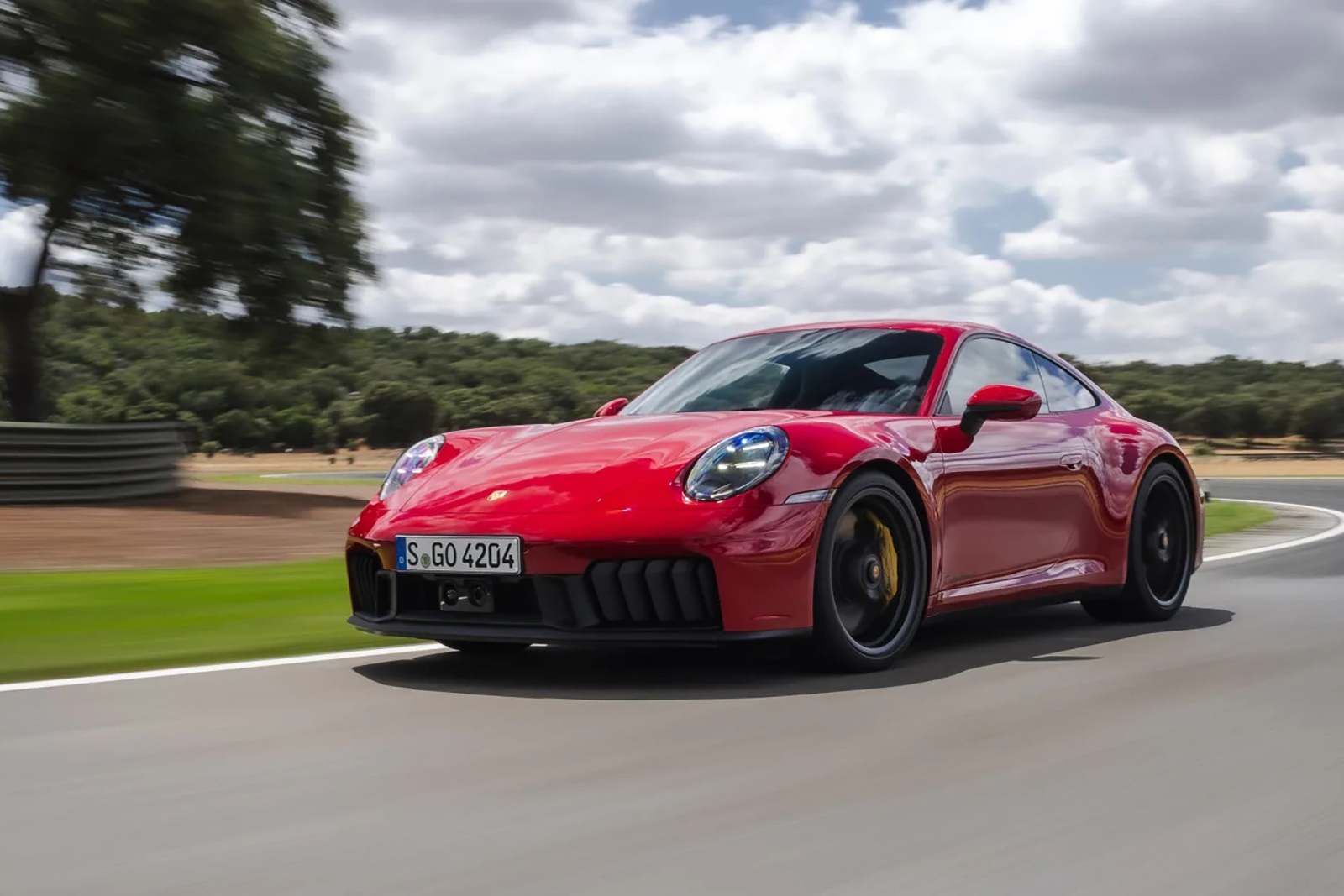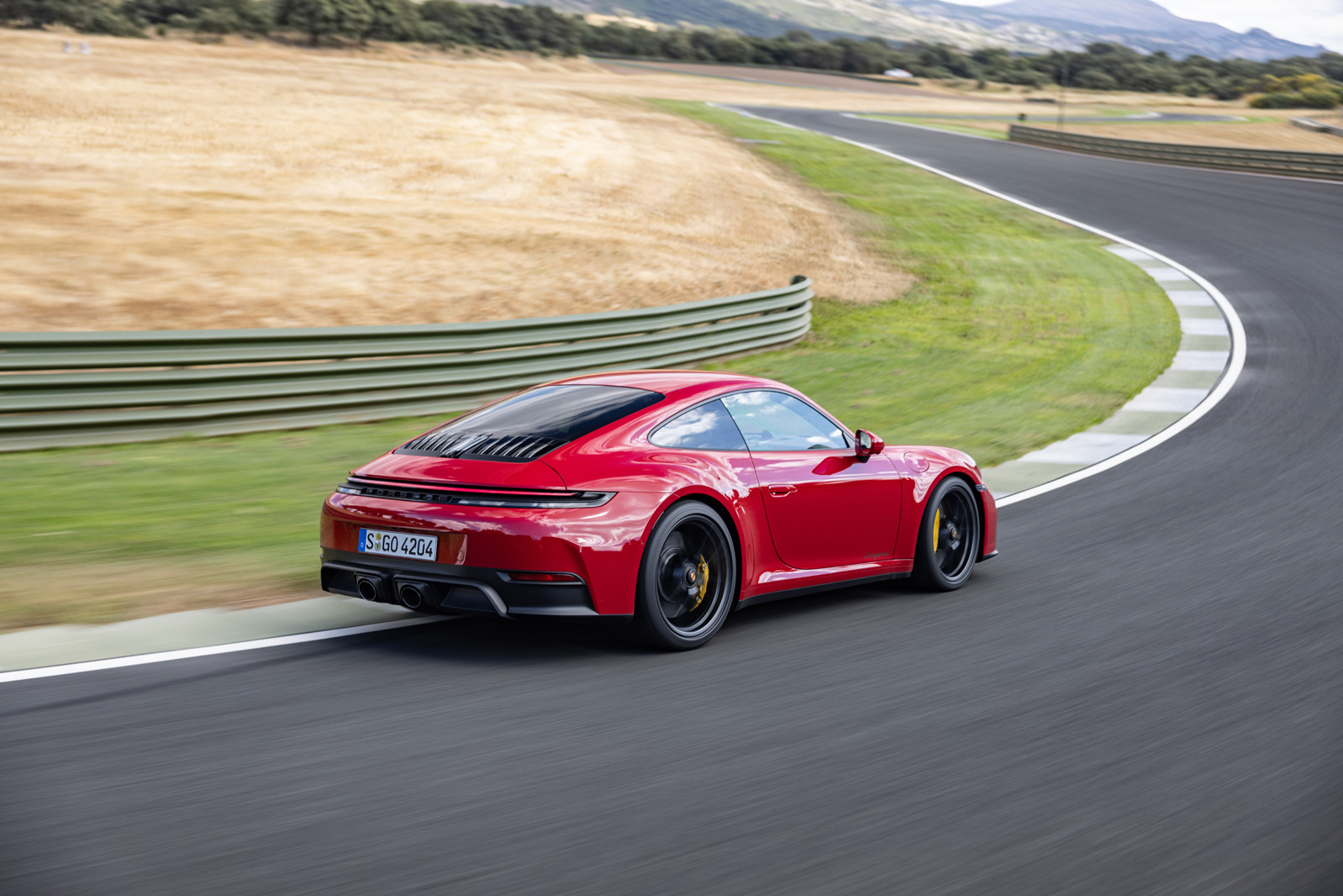The GTS's engine is a newly developed 3.6-litre flat six, 0.6 litres bigger than the familiar 3.0 twin-turbo unit used in the Carrera (and previously in the GTS) but with the same length/stroke ratio.
What’s around it is as significant as what’s inside it, because there’s now a high-voltage (400V) electrical system, negating the need for a belt drive for the air-con compressor (now electric), while there’s no separate starter motor, because there’s an additional drive motor. Saved external space is given over to inverters and converters. The engine revs to 7500rpm and on its own it makes 478bhp and 420lb ft of torque.
But since the introduction of the eight speed dual-clutch automatic gearbox in the previous-generation 911 (the 911), there has been room set aside in the gearbox for a permanent magnet synchronous drive motor, which is now fitted and produces 54bhp and 111lb ft.
There’s more. Instead of twin-turbocharging for the engine, there’s a single, larger turbocharger, but this too has a motor, to help it spin up more quickly or to keep it spinning.
Both the drive motor and this e-turbo motor are powered by a 1.9kWh battery (under the front boot lid) and can return kinetically recuperated juice to it.
The new powertrain, badged T-Hybrid, has a total output of 534bhp (Porsche works in kW, and rounding fractions to the nearest integer makes it look more powerful than the two figures combined) and 450lb ft.
You can have the GTS as a Carrera coupé or a Cabriolet with rear- or four-wheel drive or as a 4WD Targa. While no version is two tonnes, there is a payback for the extra tech. Porsche says it adds 50kg, thus the RWD coupé sneaks in at 1595kg, but among the changes for the facelift is that the rear seats are now a no-cost option, so you have to factor those in too. And even without them, the Targa 4 GTS weighs 1745kg unladen.
The 911 is still lighter than most sports cars (Aston Martin quotes a dry weight that’s heavier than the GTS for its new V8-engined Vantage), but it’s clear that nobody but Caterham and the like are exempt from 'progress'.
Rear-wheel steering is now standard, it should be noted. Also, the GTS has 10mm-lower suspension than the Carrera and PASM adaptive dampers as standard. Roll-stabilising PDCC is an electrohydraulic option powered by the new 400V system, to follow late in 2024.
The wider rear tyres are 315/30 R21s, while the fronts are 245/35 R20s. There’s also now active aero via the slats on the front and under the car, new headlights and a redesigned rear light strip.
I will mostly detail the GTS here, because it receives the bigger changes. But on the Carrera front, its 3.0-litre engine now gets turbos from the old GTS and a charge cooler from the Turbo, giving it 9bhp more (at 389bhp), and bigger brakes. It does without the fancy front aero slats but does get rear-steer as standard and the same interior adjustments.



